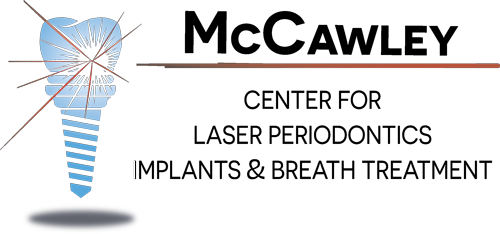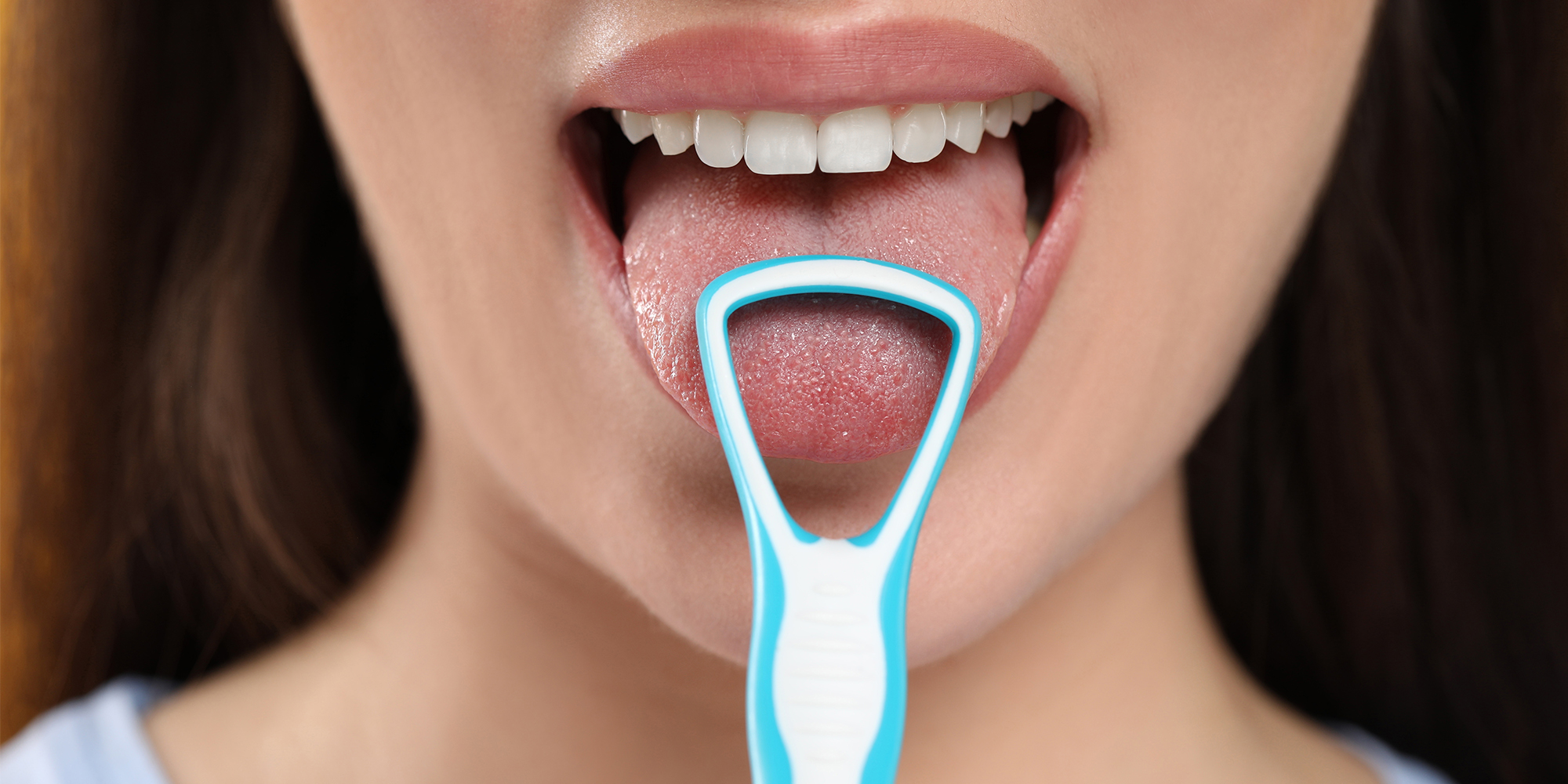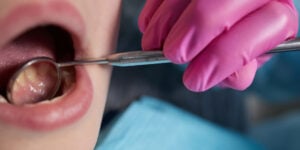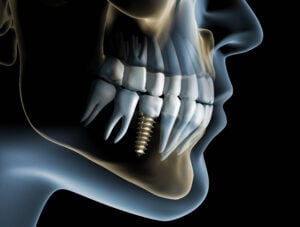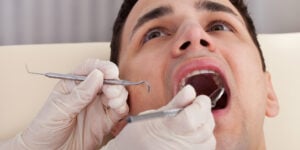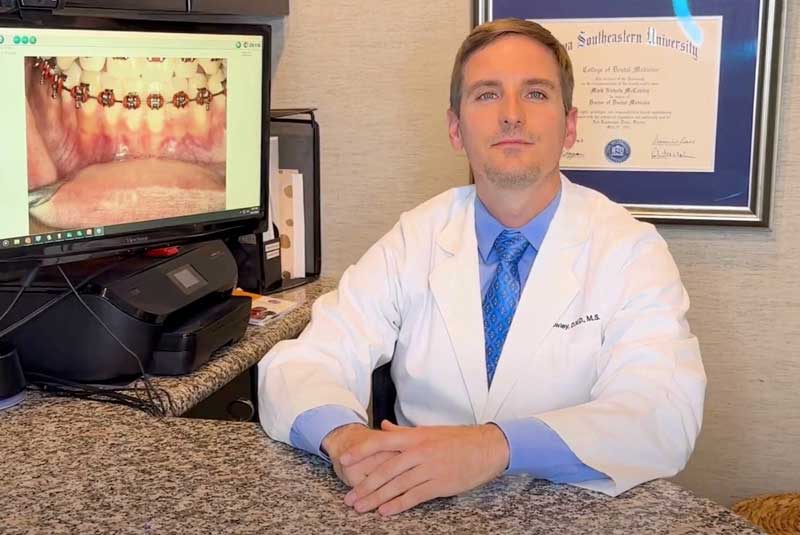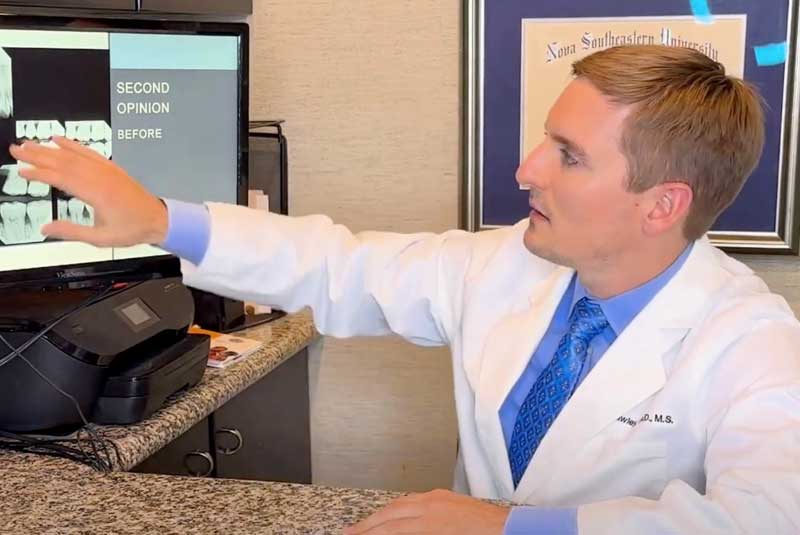| ✅ Reviewed by Dr. Tom McCawley | 🕒 Reading time: three minutes |
If your breath still smells bad after brushing and flossing, your tongue might be the missing piece in your oral hygiene routine.
At the McCawley Center for Laser Periodontics & Implants, we have seen firsthand how deeply embedded bacteria in the tongue can fuel persistent halitosis—even in patients with otherwise good oral care.
Here’s what you need to know about this overlooked source of odor and how to clean your tongue for truly fresh breath.
Your Tongue: A Hiding Place for Bacteria
The tongue’s surface isn’t smooth—it’s covered in tiny projections called papillae. These create a rough, grooved texture that traps bacteria, food particles, and dead cells.
Worse, bacteria thrive in hard-to-reach areas like the back of the tongue and the lingual tonsils, where they release foul-smelling sulfur gases such as hydrogen sulfide and methyl mercaptan
Regular brushing alone cannot reach these deeper areas. Even mouthwash is ineffective, as it doesn’t penetrate the papillae or eliminate bacteria settled near the throat.
The Benefits of Using a Tongue Scraper
A tongue cleaner isn’t just a gimmick—it’s a proven tool for removing the bacteria that cause bad breath and aren’t reached by brushing alone. The benefits of tongue scraper use include:
- Fresher breath by reducing sulfur gas–producing bacteria
- Improved taste by clearing away buildup from taste buds
- Better oral hygiene by lowering bacterial load in the mouth
- Reduced risk of plaque buildup on teeth and gums
We recommend a metal tongue scraper for durability and effectiveness. We instruct our patients to scrape from the back to the front of the tongue in gentle strokes, rinse the scraper, and repeat until no residue remains.
How to Clean Your Tongue the Right Way
If you have never cleaned your tongue properly, here’s a step-by-step guide:
- Use a metal tongue scraper: Avoid soft plastic tools that miss deeper debris.
- Start at the back: Stick your tongue out and gently place the scraper as far back as is comfortable.
- Pull forward with light pressure: Rinse the scraper between strokes.
- Repeat 10-15 times until you no longer see coating on the scraper.
- Finish with brushing and flossing: Tongue cleaning works best as part of your complete home care routine.
For those with a sensitive gag reflex, start gently and gradually work further back over time.
The Tongue and Chronic Bad Breath
Patients who come to us with long-term halitosis are often shocked to learn their issue isn’t coming from their stomach, sinuses, or poor brushing—but from their tongue and throat. We use patented instruments to remove bacteria buried in the grooves of the tongue and near the lingual tonsils.
We get results: our two to four-visit bad breath treatment protocol includes thorough tongue disinfection and home care education to remove the source of the halitosis and keep it gone.
Learn more about Bad Breath Treatment
Tongue Cleaning as Part of Whole-Mouth Care
Tongue hygiene is just one piece of your oral health strategy. To prevent bad breath and gum disease long term, we recommend what we call The FBI method: Tongue scrape, Floss, Brush, Irrigate. Daily tongue scraping plus this trio can make a dramatic difference in both breath and gum health.
We combine at-home guidance with advanced tools like phase-contrast microscopy and gas chromatography to diagnose and treat the exact bacteria causing your symptoms—because every mouth is different.
Ready to Breathe Easier?
If you are struggling with chronic bad breath or want to improve your oral hygiene routine, tongue cleaning is a smart place to start. But when home care isn’t enough, professional help can make all the difference.
To book an appointment at our periodontal office in Fort Lauderdale, FL, call (954) 807-4829 or visit us at 800 East Broward Blvd #706 Fort Lauderdale, FL.
FAQs
A white or yellowish coating on your tongue is often a buildup of dead cells, bacteria, and food debris trapped between the papillae. This coating is a common source of bad breath and can usually be removed with regular tongue scraping. If it persists, it may indicate oral thrush or another condition, and you should consult your dental provider.is is the answer.
While tongue cleaning alone cannot prevent gum disease, it reduces the overall bacterial load in the mouth, including the bacteria that contribute to gum infections. Combined with brushing, flossing, and regular dental cleanings, it plays a valuable role in protecting your gums.
We recommend cleaning your tongue twice a day, ideally in the morning and evening. Adding tongue cleaning to your daily routine helps remove odor-causing bacteria before they can build up and contribute to bad breath or gum inflammation.
Not necessarily. While poor oral hygiene is a common cause, persistent bad breath can also stem from bacteria deep in the tongue, throat, or gum pockets, even in people who brush and floss regularly. Other contributing factors include dry mouth, certain medications, and undiagnosed infections.
We recommend metal tongue scrapers because they are more effective and hygienic than plastic options. They provide firm, even pressure to remove buildup from the tongue without bending or wearing down over time.
